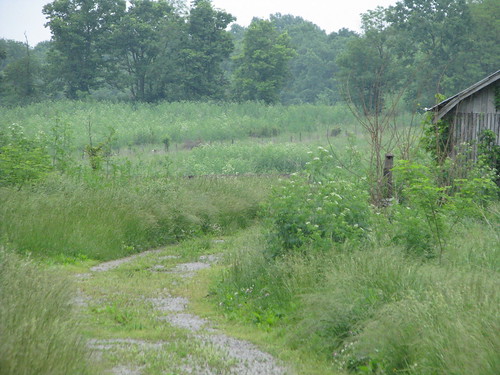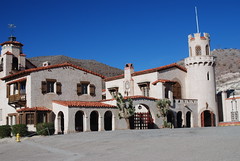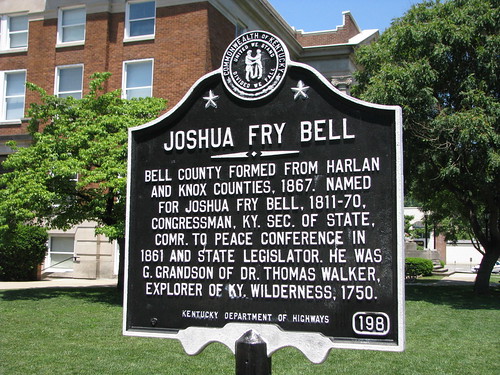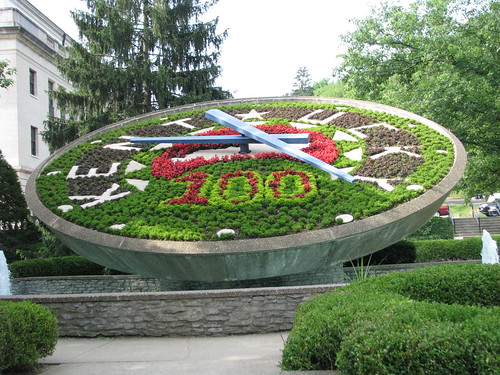Author: thekaintuckeean
No Destination: Griffith Woods
 |
| Griffith Woods, Cynthiana, Ky. |
745 acres of protected Harrison County land provides the purest glimpse of what Europeans first saw when the entered the Bluegrass region. This is what the land looked like when the Native Americans lived here. Griffith Woods is a cooperative effort between the Nature Conservancy, the University of Kentucky and the Kentucky Nature Preserves Commission. It is the centerpiece of the Bluegrass Restoration Project, an effort dedicated to returning as much of the Bluegrass to its original state. This effort is particularly important as the Bluegrass region was listed as endangered in 2006 by the World Monuments Fund (of course, the WMF was referring to horse country, not the natural habitat).
Originally called Silver Lake Farm, both the farm and the Griffith family were key figures in the early days of both the Commonwealth and the county. In the early 1900s, owner and farmer William Griffith preserved a portion of his land which today stands as the largest oak-ash savanna in Kentucky. Many of the blue ash, chinquapin oak, bur oak, hickories and black walnut trees are over 300 years old. In fact, the world’s largest chinquapin oak is at Griffith Woods. Fenced off, except for private tours, the view above is from the gate. There is also an abandoned home/tavern which was built around 1822.[*] It appears that UK and the Harrison County Fiscal Court might restore the tavern as well. Check out my other pictures of Griffith Woods @flickr.
No Destination: Silas Baptist Church
 |
| Silas Baptist Church, Cynthiana, Ky. |
In 1798, land was given to the Cooper’s Run Church by Charles Smith, Jr. Two years later, 20 congregants left Cooper’s Run to form Silas Baptist Church. For fifty years, the church worshipped in a log structure. In 1850, the present brick structure was erected (with significant remodeling done in 1902). It is the oldest, continuously operating church in Harrison County.
The church is a member of the independent, Elkhorn Baptist Association. Marker 1596 reads:
Organized by 20 members of the Cooper’s Run Church in 1800, with the help of Ambrose Dudley, George Eve and Augustine Eastin. They built at this site on land given, 1798, by Charles Smith, Sr. The log structure was replaced by a brick house of worship in 1850 and redecorated in 1902. It is the oldest church in the county continuing without interruption.
Check out my other pictures of the Silas Baptist Church on Flickr!
No Destination: Death Valley Scotty
 |
| Death Valley Scotty historic marker, Cynthiana, Ky. |
Walter Scott, aka Death Valley Scotty, was an adventurer in the greatest sense of the word. He was a part of Buffalo Bill’s Wild West Show, held the record for rail travel from 1905 to 1934 (44h:54m; LA to Chicago), and was a fantastic schemer. His fictitious Death Valley gold mine brought in many investors, including the president of National Life Insurance Company of America (Albert M. Johnson).
 Johnson followed Scott to Death Valley and Johnson’s wife convinced him the weather was good for his health. Though Scotty claims it was built for him (and is so named), Johnson erected Scotty’s Castle (left, photo by K. Repanshek). The castle was constructed at a cost of $1.4 million is now owned by the federal government.
Johnson followed Scott to Death Valley and Johnson’s wife convinced him the weather was good for his health. Though Scotty claims it was built for him (and is so named), Johnson erected Scotty’s Castle (left, photo by K. Repanshek). The castle was constructed at a cost of $1.4 million is now owned by the federal government.
Scott, for all his frauding and scheming, never spent much time in jail. He is buried on a hill overlooking Scotty’s Castle.
No Destination: Joshua Fry Bell
 |
| Joshua Fry Bell historic marker #198, Pineville, Ky. |
Joshua Fry Bell, for whom Bell County is named, was born in Danville and is a 1828 Centre College alum. Bell, a lawyer, was elected to the U.S. House as a Whig. Seeking to return to Kentucky, he served a short time as secretary of state under Governor Crittenden. But history tells us that the Whig Party disappeared. Before the rise of the Republican Party, however, Bell (and others) identified with the Opposition Party. It was under this banner that Bell ran for governor, losing to Beriah Magoffin.
Bell served alongside fellow Kentuckians William Butler and John Crittenden at the Peace Conference of 1861, a last-ditch effort to avoid Civil War.
From 1863 to 1867, Bell served in the Kentucky House of Representatives. During this time, the county bearing Bell’s name was formed. In fact, the county’s official name was “Josh Bell County” until 1873.
No Destination: Capitol
 |
| Kentucky State Capitol, Frankfort, Ky. |
A group of five commissioners selected in 1792 that Frankfort should be the state’s capital (the question was revisited in 1904). Since that selection, four capitol buildings have been constructed. The current structure was completed in 1910 (Happy 100th Birthday post) and is in the Beaux Arts style. Inside are housed all branches of the government: executive (first floor), judiciary (second floor) and the legislature (third floor)
Parts of the building reflect Kentucky’s love of French architecture. For example, architect Frank Mills Andrews modeled the capitol’s grand staircase after the staircase at the Paris Opera. From 1910 until 1927, the Capitol was Kentucky’s tallest building (replaced by Louisville’s Heyburn Building).
On the first floor, under the rotunda, are statutes of Abraham Lincoln, Henry Clay, Ephraim McDowell, Jefferson Davis and Alben Barkley. The statues of Clay and McDowell are replicas of those in the U.S. Capitol’s statuary. Above, the recently painted and restored dome shines over the four pendentive murals: Nature, Industry, Culture and Civitas.
Check out all my Pictures on Flickr of the Capitol!
No Destination: Floral Clock of Frankfort
 |
| Floral Clock, Frankfort, Ky. |
Since 1961, the Floral Clock has sat behind the Kentucky State Capitol. When Gov. Bert T. Combs provided $50,000 from his contingency fund to erect the clock the project was labeled a folly by political opponents. Happy Chandler declared in a gubernatorial debate: “Well, they don’t say it’s half past 2 in Frankfort anymore. They say it’s two petunias past the jimson weed.” Today, however, the clock is one of Frankfort’s most popular destinations.
All of the flowers used are grown in nearby greenhouses. The “100” noted in the floral arrangement celebrates the Capitol’s 100th Birthday. The floral clock is one of the largest in the world and is similar to those in Edinburgh, Scotland and Niagara Falls, Canada. Weighing 200,000 pounds (the hour hand alone weighs 420 pounds), the usual floral design includes 13,000 plants.
Happy Weekend, Kaintucks!
Telling us what we already knew: ticket sales to the WEG are slow, but the Fifth Third Bank Pavilion at Cheapside Park is quickly becoming the place to be. [Tom Eblen]
Northern Kentucky’s Fort Mitchell has litterally grown over the years – read its history as NKY.com profiles pieces from the The Encyclopedia of Northern Kentucky. [NKY]
Uncovering Alltech, Nicholasville’s international biotech company which is hosting the WEG. [Jessamine Journal]
Tackling a big roundabout coming to the roads of Rineyville, Kentucky. [Columbia Magazine]
UK Hospital will open its new emergency room next month; some got a sneak peek. [Kentucky.com]
Might Southland Christian Church be expanding into Lexington and redeveloping the old Lexington Mall? [BizLex]
No Destination: Governor’s Mansion
 |
| Governor’s Mansion, Frankfort, Ky. |
When the new Capitol was being constructed, Governor Augustus E. Wilson told the state legislature that a new governor’s house was needed closer to the capitol. Within months, $75,000 was appropriated (the final cost was $95,000). The result is this Beaux Arts home inspired by Marie Antoinette’s villa, Petit Trianon, in Versailles, France. The residence, completed in 1914, has been the home to twenty-three governors. It has undergone two notable renovations: the first was spearheaded by First Lady Phyllis George (John Y. Brown, Jr.) and the second, of the ballroom, was led by First Lady Glenna Fletcher (Ernie Fletcher).
Although the gardens have taken many forms, the current layout is based on the original 1912 design. The first floor contains two reception rooms (one for the First Lady and one for the Governor), two dining rooms (one for the family, the other for state occasions), the family sitting room, and the ballroom (chandaliers are original to the home). Below are some additional pictures of the magnificent interior which I toured during the Capitol’s Centennial. At the time the photo was taken, the State Dining Room was to host former governors and other dignitaries for a luncheon within the hour.
 |
| Governor’s Reception Room |
 |
| Ballroom |
 |
| State Dining Room |
No Destination: The Citizen Advertiser
 |
| The Citizen Advertiser, Paris, Ky. |
Although the Library of Congress only indicates publication to 1966, the Citizen Advertiser’s history is much older. Under a few different names, the paper traces its roots to the Western Gazette which was first published in 1807. As evidenced from the picture above, the paper thus claims title as the “oldest newspaper west of the Alleghenies.” The Kentucky Press Association published an article celebrating the Citizen Advertiser’s bicentennial which outlined the paper’s history.
Noticing those six words, of course, made me pull over to take this picture. As a Kentuckian, I want to hold them as true and allow our state to lay claim to this title. But, a little research revealed that the Chillicothe Gazette of Ohio (Ohio’s oldest commercial enterprise still in operation) was begun in 1800. [*] The Pittsburgh Gazette, now the Pittsburgh Post-Gazette, traces its roots to 1786 giving it the rightful claim to being the oldest newspaper west of the Alleghenies. [*] [*]
OK, so the 6 words may not be true. BUT… the newspaper is still significant as it is the oldest operating newspaper in the Commonwealth. (Unless someone can debunk that claim…)
